From Pakistan to India: Tracing my grandmother’s refugee journey
After my grandmother died, I turned to online tools to virtually piece together a part of her life she never discussed.
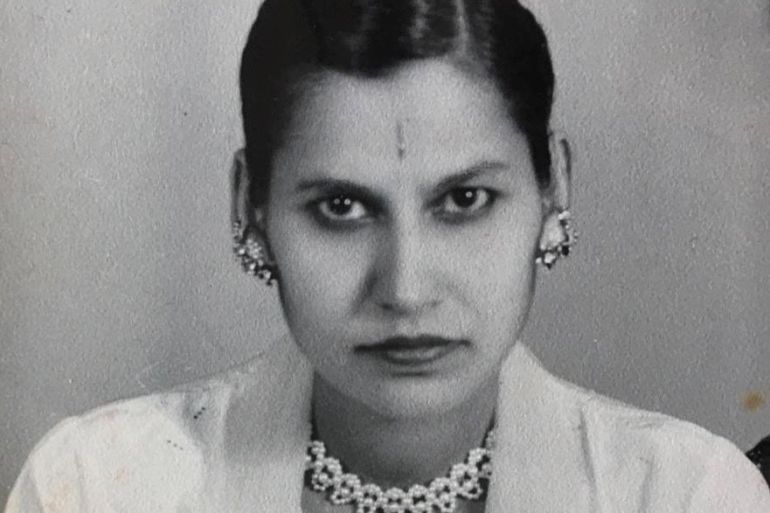
Sometime in mid-August 1947, my grandmother, Abnash Kaur, then about 12 years of age, boarded a train with her family from Lahore in what is now Pakistan. The journey would take her to Kalka, a sleepy Indian town in the foothills of the Himalayas. She would never return to Pakistan.
Like an estimated 15 million others, she was a refugee – forced to leave her home as the subcontinent was divided into two separate nation-states: Pakistan and India.
Keep reading
list of 3 itemsMy father, a Pakistani prisoner of war in India
My mother’s battle with drug addiction in Pakistan
Millions of Muslims headed to West and East Pakistan (now Bangladesh) while millions of Hindus and Sikhs, like my grandmother, migrated to India. One of the largest-ever mass migrations, the Partition left as many as two million people dead and up to 100,000 women kidnapped or raped.
Homes were set on fire and looted. Trains shuffling refugees back and forth between the newly formed nations were filled with corpses and gangs of vengeful men armed with swords. Massacres en route were commonplace. According to a report by the Australian Associated Press in September 1947, one massacre left 3,000 Muslim passengers dead. Reports of trains dripping in blood and railways blanketed with the dead led to these treacherous journeys becoming known as “blood trains”.
Women drowned themselves to avoid being raped, their bloated bodies floating through contaminated, blood-stained rivers. The acrid scent of death and destruction embedded itself into the nations’ topography.
My grandmother, however, never spoke of any of this. When asked about Partition, she would answer just that “bad things happened”. If probed further, she would simply ignore the question or change the topic. So we seldom asked.
At the age of 24, she migrated to Malaysia from India with her new husband – my grandfather, a police inspector and former soldier in the British Malaya army.
She arrived in Malaysia as if she had always been there. Like a shiny, new ornament dangling on a Christmas tree she fit in perfectly; learning to speak Bahasa Malaysia fluently and to cook Chinese and Malay dishes.
She gave birth to her first child in 1959 and went on to have six more, one of whom died in infancy. She lived in several different cities in Malaysia before finally settling in Seremban in 1963, a town known for tin mining and its sweet, baked pork buns.
To us, it seemed Partition was little more than a distant memory to her.
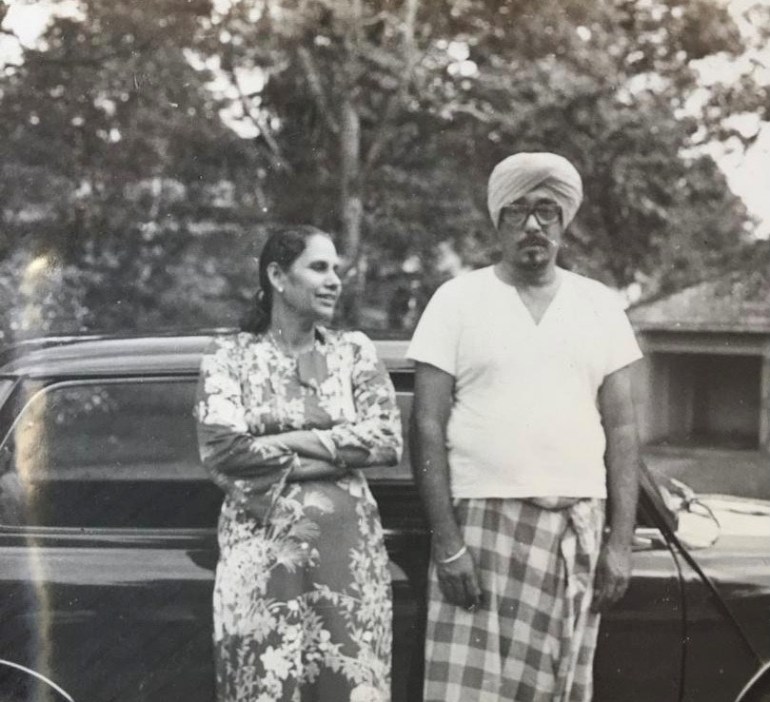
Raven black hair
On February 2, 2019, at 4:30am, my grandmother died of cancer. It had started in her breasts and metastasised to every bone in her body.
Ten minutes earlier, when everyone else was sleeping, I had gone into her room, where she lay on the hospital bed we had rented so she could spend her final months at home.
I held her hand, listless and sticky with Johnson’s baby oil we used to moisturise her dehydrated skin. On her wrists were the gold bracelets my grandfather had given her long before.
The maroon varnish my sister and I had painted on her nails a month earlier was chipped now. Before cancer, she always wore a slick coat of maroon or a deep cherry red to match her Maybelline lipstick. She would never have been seen with it chipped.
Even in her early 80s, she had meticulously dyed her hair raven black with a box of the Revlon hair dye she stockpiled in her kitchen cupboard. As a child, I was always mesmerised by that thick, black hair drenched in “Zam Zam” oil that smelt like Vicks and codeine cough syrup.
Now lying in bed pumped full of morphine, whatever strands of hair she had left were grey. Her body, once plump from incessant cooking and eating, was now thin, frail and cold – enveloped in thick winter fleeces. I kissed her head, squeezed her hand and through tears told her I loved her.
I left the door ajar as I went to get some chocolate milk, and in the few seconds I was gone, she passed away.
My family put me in charge of her obituary, being the only writer in the family. We talked about how she loved to cook. How she loved to talk. How she liked KFC and bad Indian soap operas. How she knew all the gossip in town. How her children were her life. And how she was gentle and kind to everyone – from the milkman to the okra plant in her garden.
More than a hundred people attended her funeral. Almost everyone had a story about the kindness my grandmother had shown them in their hour of darkness. She was part of a friendship group that dated back to the late 1950s when she first arrived in Malaysia; they had supported each other through the loss of a child, domestic violence, illness and, finally, death.
But I knew nothing of her early life. Nothing of who she was before she became a wife, mother, grandmother and matriarch of our family.
Before she died, she had promised me she would finally tell me the story she had avoided for all those years. But by the time I came home to visit, the cancer had completely ravaged her – leaving just the shell of the talkative woman I had once known. She barely spoke in the months before her death. And when she died, she took her Partition story with her.
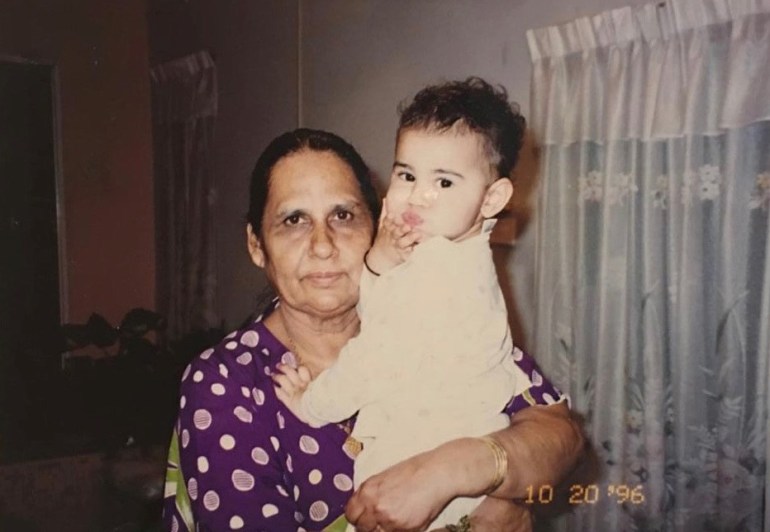
‘She refused to talk about it’
So I decided to retrace my grandmother’s journey with the little information I had. Piecing together parts of her life using a combination of Google Street View, maps, travel guides and YouTube videos, I have travelled through her Partition journey and early life. And in the process, I have learned more about her than I ever imagined I would.
My grandmother was born in Sialkot, Pakistan – an ancient city that was razed by Alexander the Great and which had a substantial Sikh population prior to Partition. It is the number one producer of footballs in the world and home to a 500-year-old gurdwara.
We do not know exactly when she was born. She had no birth certificate. Her family was working-class and her father was a railway worker.
Searching for more information, I contacted my aunt, the oldest of my grandmother’s children. She, in turn, suggested I speak to my grandmother’s best friend of 60 years and my grandmother’s sister-in-law. But neither of them knew much about my grandmother’s early life. “She refused to talk about it,” they both explained.
According to my grandmother’s sister-in-law, she had well-off relatives in Agra, the home of the Taj Mahal. The patriarch of the household worked for the Indian army. My grandmother’s family would holiday there while they were still living in Sialkot. It was different from the life she lived in Sialkot with her father’s modest pay as a railway worker. I vaguely remember my grandmother talking about how much she loved to swim during the school holidays. I would wonder whether she swam in iridescent marble pools like the one we saw at the Taj Mahal when we went together in 2003.
She had two siblings, an older sister who, like her, migrated to Malaysia and a younger, abusive, alcoholic brother who lived in Canada. He would sometimes visit Malaysia to beg my grandmother for her gold to fuel his habit. He passed away years ago, according to my mother. I never met him.
My grandmother also survived typhoid fever thrice. It appeared she caught it as a child and again around the time of Partition. The typhoid would lead to chronic, severe leg pains that plagued her in old age.
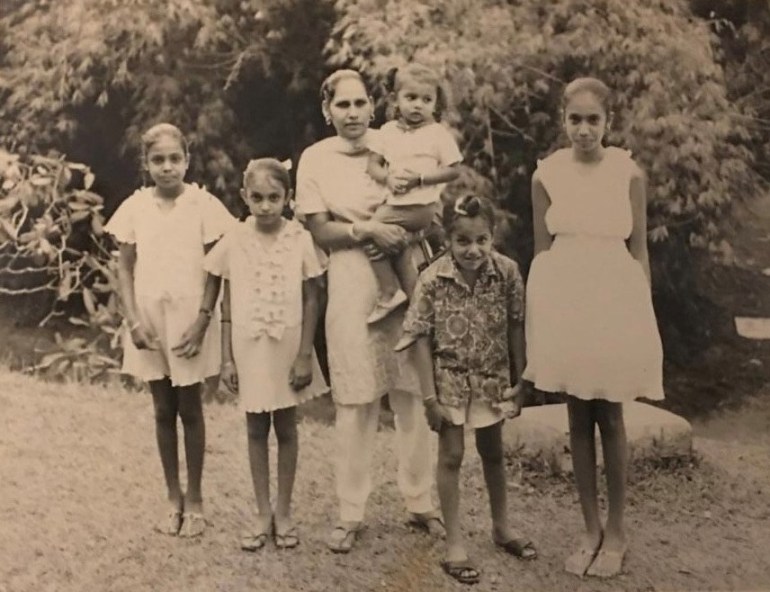
She lived a simple life in Pakistan. She would traverse orchards of Chaunsa mango and jujube trees in turquoise juttis and would eat chikoo and pomegranate during long summer nights. After school, she would drink a cool glass of lassi from the street food vendor near her modest home. She loved the sweets of her homeland; Balushai, Kalakand, Jalebi and Patiasa which her family would buy from family-run sweet shops on their meagre salary.
According to the late veteran Indian journalist, Kuldip Nayyar, Sialkot withstood the initial surge of violence in 1947. In August 1947, after India and Pakistan’s independence, my grandmother and her family left for Lahore to board a train to the newly created India. The small house in the sprawling working-class neighbourhood where Muslims, Sikhs and Hindus had once co-existed peacefully, the 500-year-old gurdwara, the sweets and pomegranate trees were all gone and eventually forgotten by my grandmother as she began her new life in India.
Train journey
As my grandmother left us little to go by, I had to turn to secondary sources like Train to Pakistan, by Khushwant Singh, the famed Indian author who took a very similar train journey from Lahore to Kalka during Partition. Although the book and 1998 movie were somewhat helpful, I needed more. I decided to try virtually travelling through my grandmother’s journey. I started by watching film footage of refugee trains from Lahore by the British Film Institute. I am not sure what I had expected. I had read about Partition but perhaps didn’t fully understand the horror of it; the sheer scale of the event.
The Partition Museum of Amritsar has a digital exhibit with Google Arts and Culture that provides an interactive overview of how a typical partition train journey would go. The trains were filled with people stuffed like cattle in a pen, awaiting possible death through a massacre, disease or starvation.
My grandmother migrated around monsoon season amid sweltering heat, torrential downpours, and the shadowy, lurking presence of cholera. Going through the digital archives of the museum and watching survivor stories, I could not help but wonder what it must have been like for my grandmother. Overcrowded trains with refugees hanging onto its exterior. Discarded luggage wasting away in train stations. The arrival of refugees into various camps in India, Pakistan and Bangladesh where they were processed into their new homeland. I imagined my grandmother boarding the train in her pink Punjabi suit with jasmine garlands in her chottis (plaits) and smeared kajal from crying.
While my grandmother never talked about her train journey, I found a blog of a Partition survivor who went to the same train station as my grandmother: Kalka railway station. Unlike my grandmother, he was heading to Pakistan from India. He recalled the collective tears shed from passengers who had to leave all their belongings behind, a suitcase filled with Qurans piled among the luggage on the platform.
My grandmother and her family eventually arrived in Kalka and made a life in their new homeland, as best as they could. She studied until the 10th grade and became a primary school teacher soon after. In 1958, she married my grandfather in Kalka amidst a backdrop of rolling, verdant hills. Her sister, who was already settled in Malaysia, had met with my grandfather and told him about my grandmother. He had chosen her name from a list of eligible Sikh bachelorettes in India. They celebrated their honeymoon in the town before they left for Malaysia – never to return.
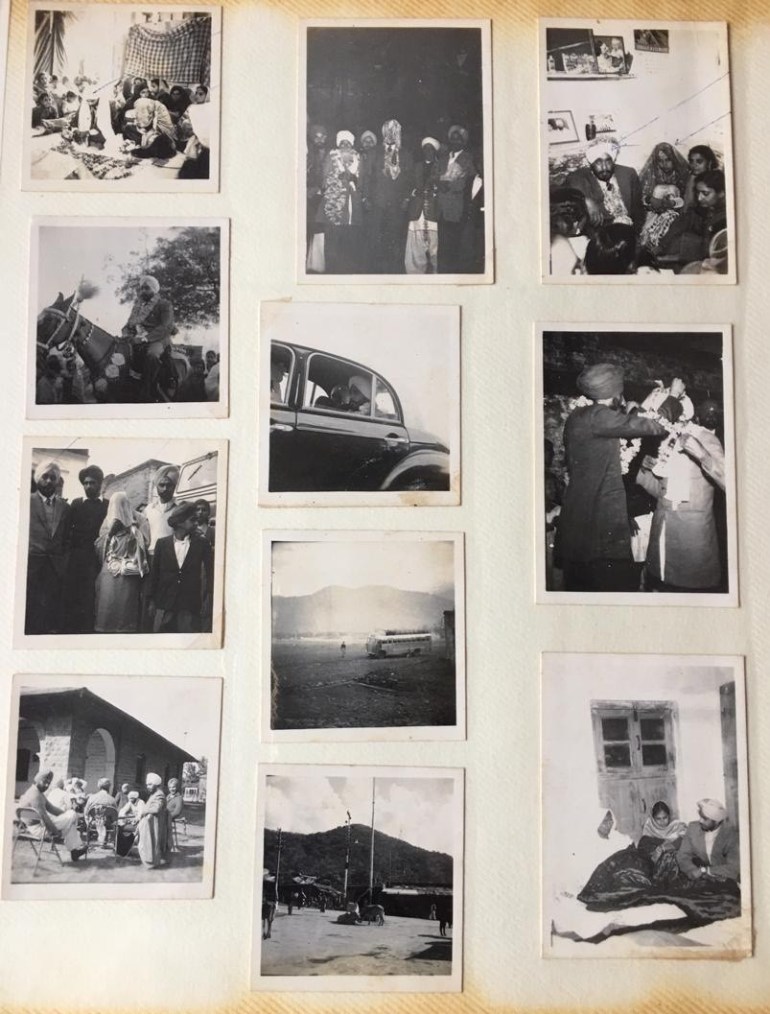
Contact book
In 1980, my mother visited Kalka for the first time with her uncle, my grandmother’s brother. They went to see the family home. “It was a wooden house, near the hills, with lambs and baby goats. It was modest and crowded,” she recalled.
After my grandmother died, my mother kept her contact book from the 70s. We tried to find her relatives, the ones who lived in Kalka and others who lived in Punjab, Canada, New Delhi, and other parts of Malaysia. Despite my grandmother living only an hour away from her sister, they were not close so no one knew the contacts of my grandmother’s sister’s children, who were well into their 70s. My grandmother’s contact book meticulously kept details of names and addresses but no phone numbers. It seemed nearly impossible to find anyone – until we came across one woman who lived in Punjab. I had managed to find her name and the phone number of a shop she owned. My mother called only to find out that the woman was not the same woman in the contact book. There was no way we were going to find out any more information about my grandmother.
Why was my grandmother such a mystery? Why did she never go home or talk about her mother, father or sister? Perhaps due to trauma, my grandmother chose to cut that part of her life out, like slicing out a festering wound. Although we can speculate about trauma being the reason my grandmother never talked about any of it – the Partition, her childhood, the train journey, her family – we will never know the answers.
My grandmother may have died and left us with more questions than answers, but this whole mystery has bonded my family together. It made us all start talking about her again and who she was as a person based on how we knew her – the smart, kind and chatty woman who had an affinity for Tupperware and fluffy socks from Daiso. We have talked about hiring a private investigator to find her relatives and discussed a possible trip to Punjab and her original home in Pakistan. Although we will all have to settle for virtually travelling for now.